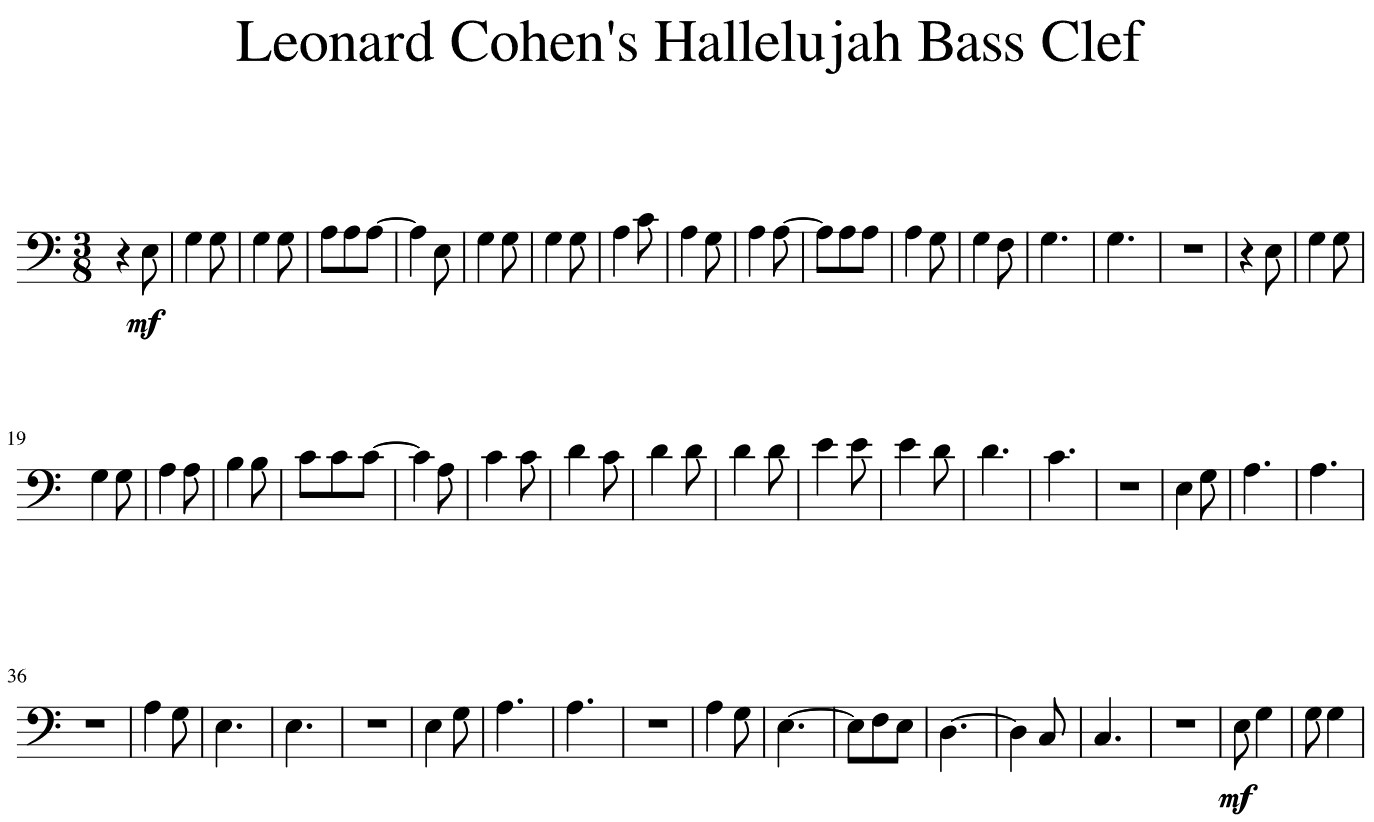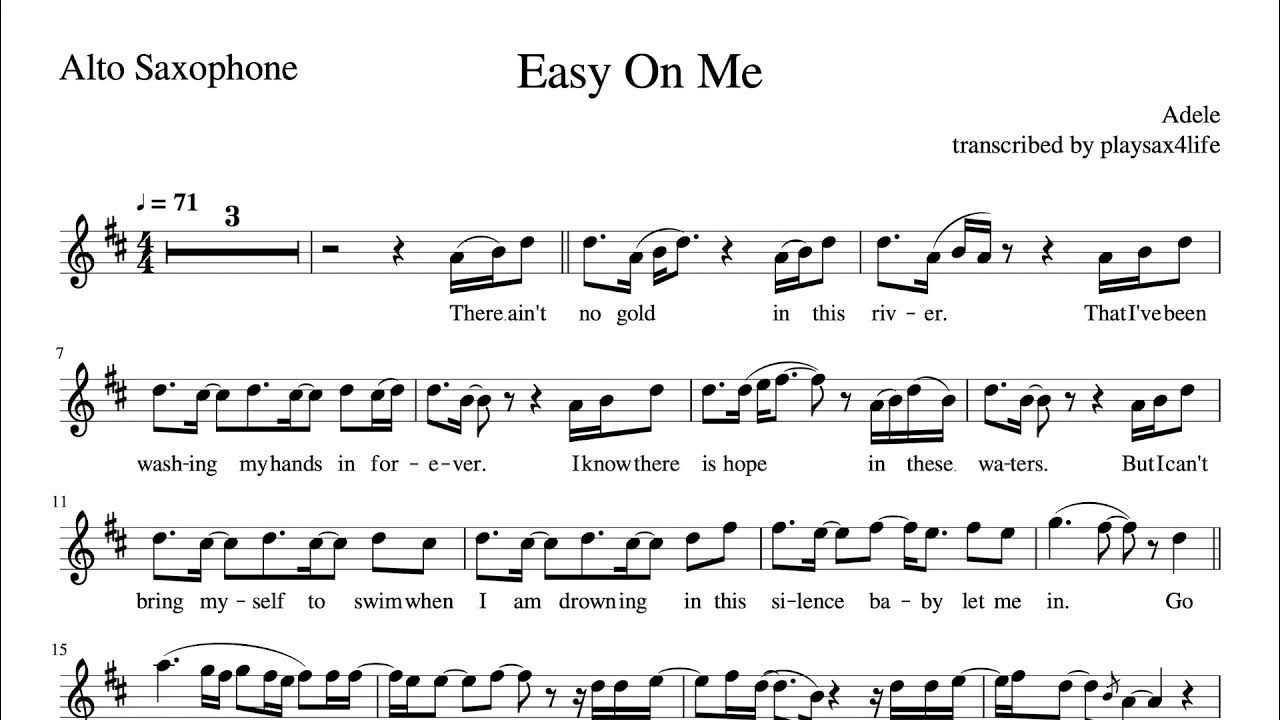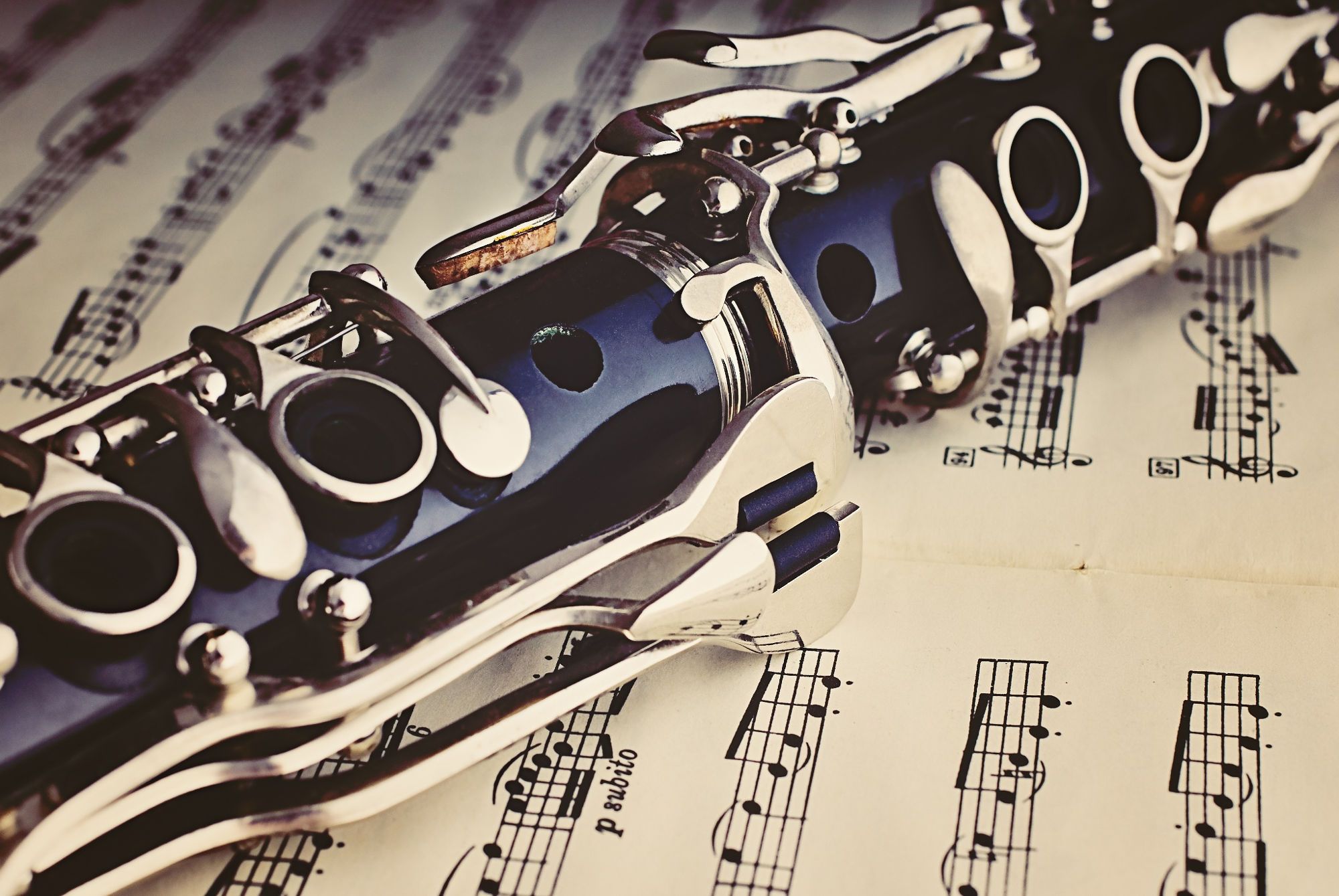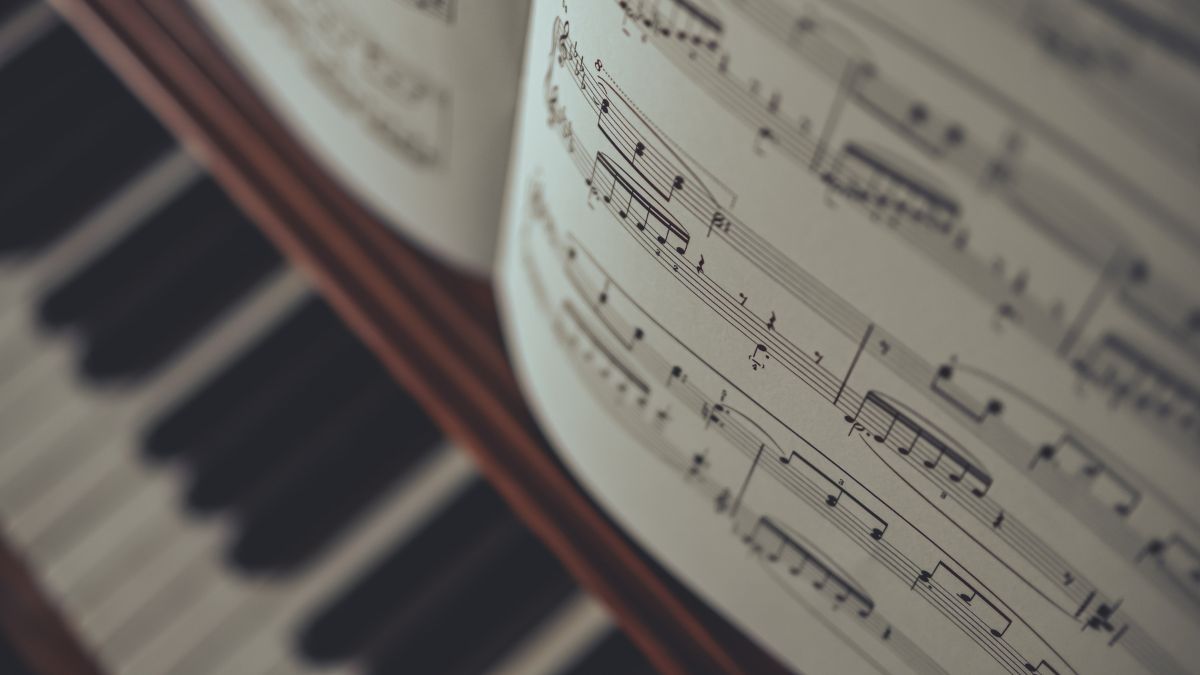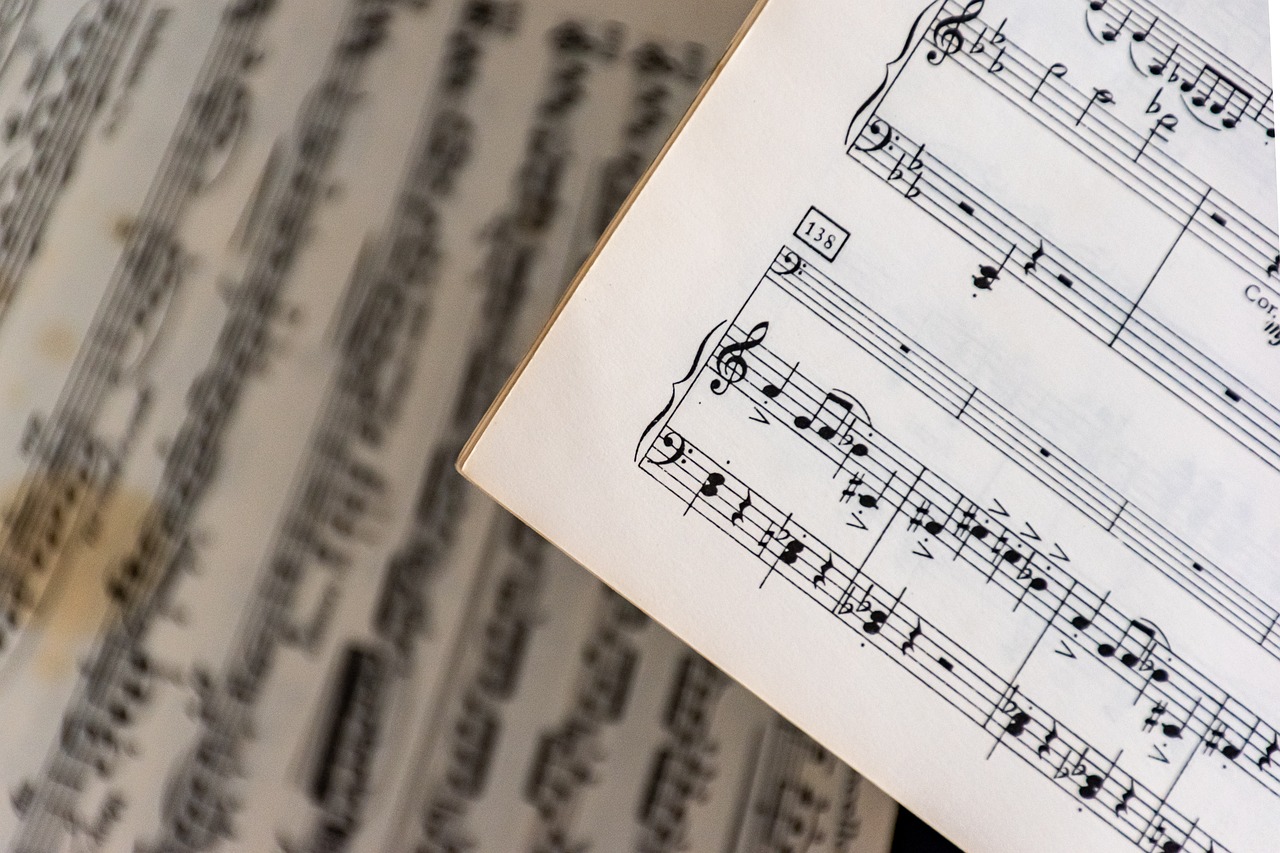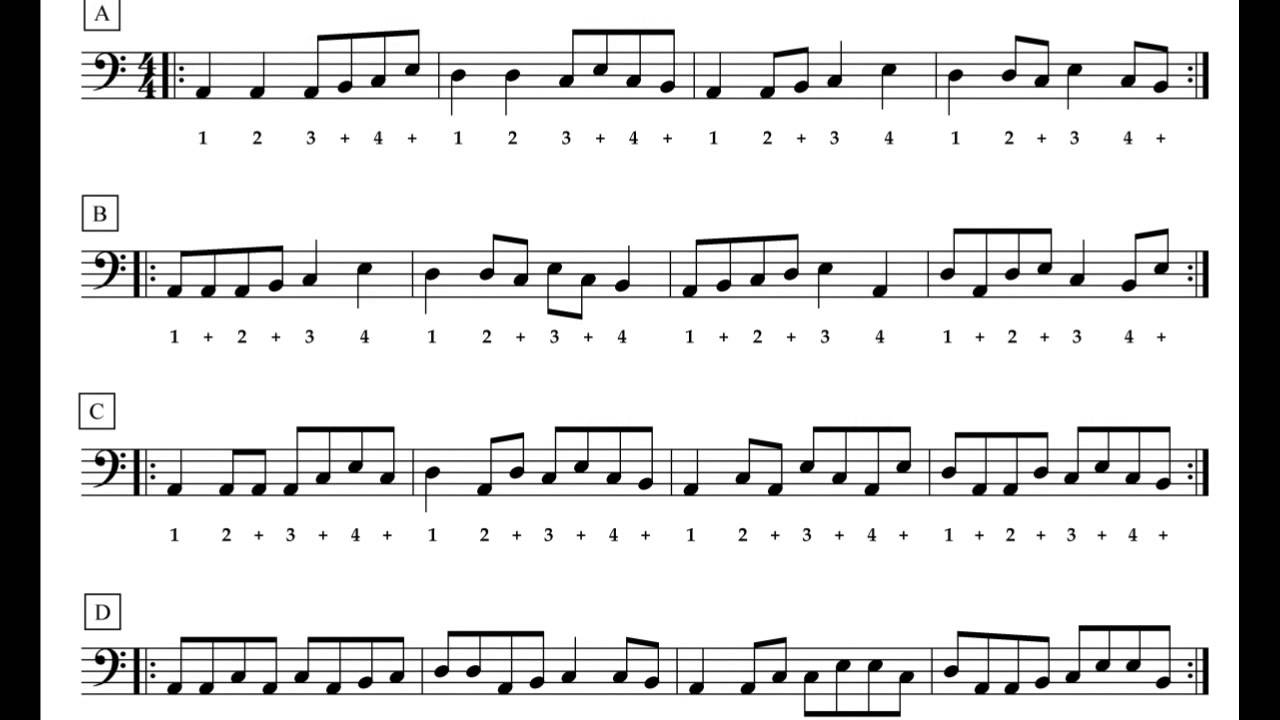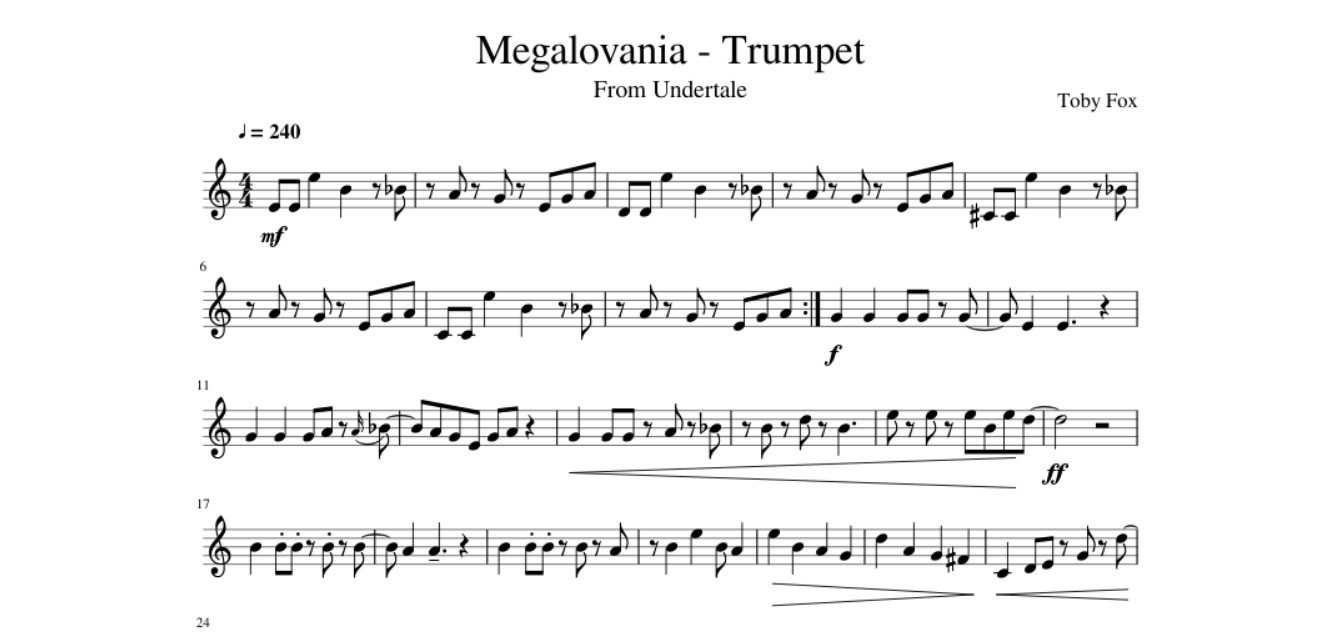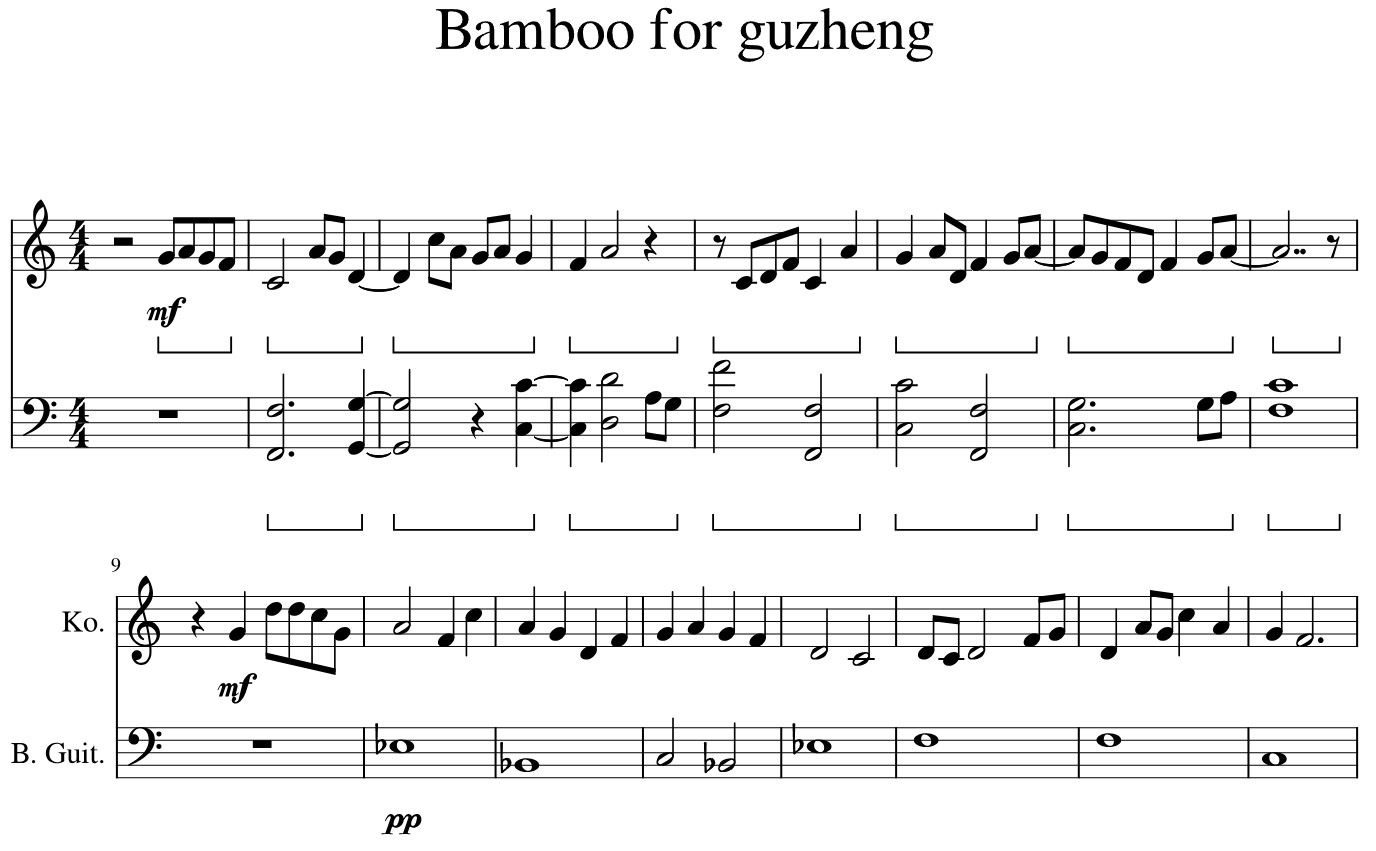Home>Events & Info>Acapella>How To Read Sheet Music For Acapella
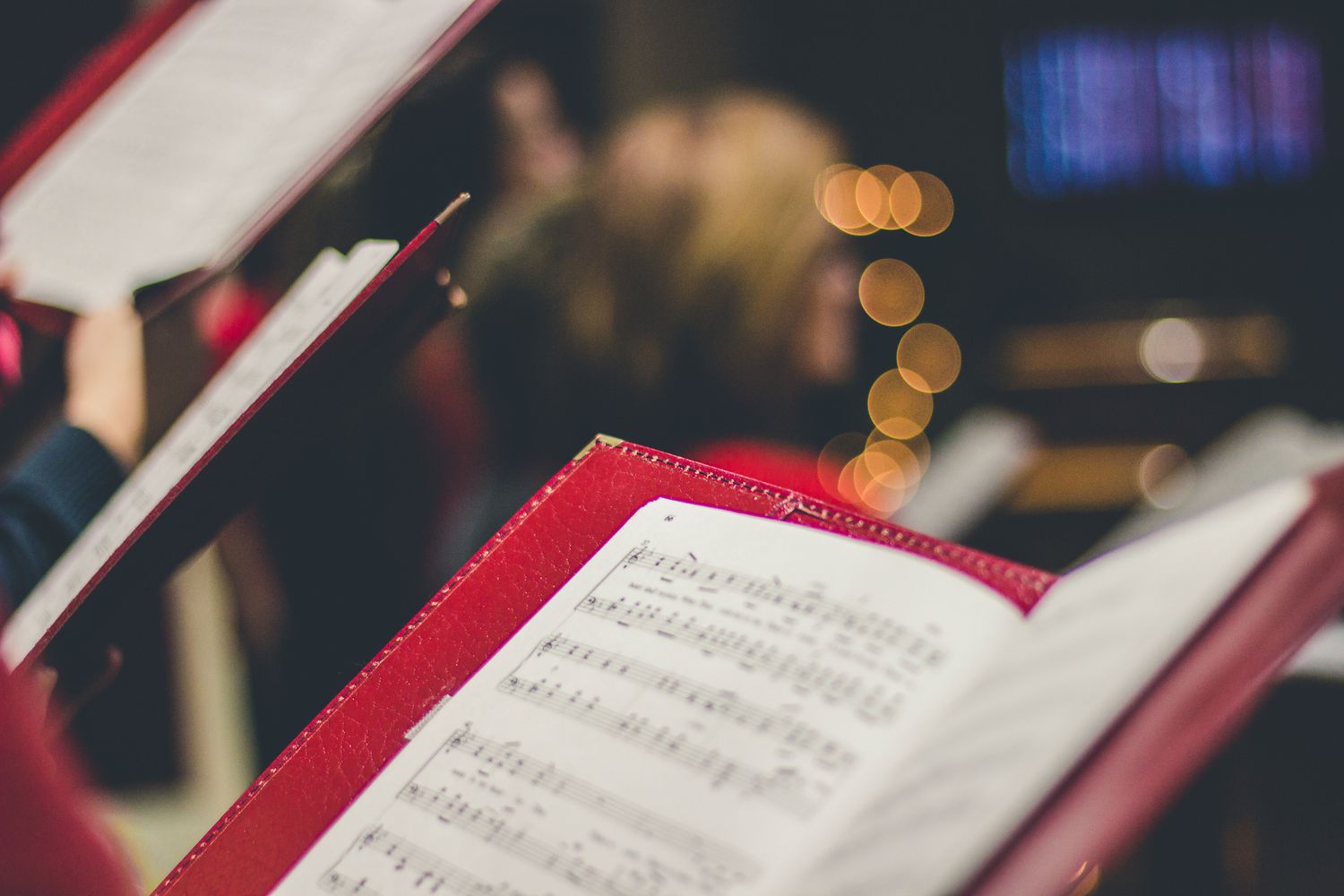

Acapella
How To Read Sheet Music For Acapella
Modified: January 22, 2024
Learn how to read sheet music for acapella singing. Enhance your vocal skills and master acapella harmonies with our step-by-step guide.
(Many of the links in this article redirect to a specific reviewed product. Your purchase of these products through affiliate links helps to generate commission for AudioLover.com, at no extra cost. Learn more)
Table of Contents
Introduction
When it comes to singing in an acapella group, having the ability to read sheet music is an invaluable skill. Sheet music provides a roadmap for vocalists, allowing them to navigate through intricate harmonies and melodies with precision and accuracy. It serves as a universal language for musicians, enabling them to communicate their artistic intentions and bring a composition to life.
Understanding how to read sheet music not only expands your musical repertoire but also enhances your overall performance as an acapella singer. Whether you’re a seasoned vocalist looking to sharpen your skills or a beginner eager to explore the world of acapella, this guide will take you through the essentials of reading sheet music for acapella.
Throughout this article, we’ll delve into the fundamental aspects of sheet music comprehension, from deciphering musical notes and symbols to interpreting key and time signatures. By the end of this guide, you’ll have a solid foundation in reading sheet music for acapella and be well-equipped to tackle any vocal arrangement that comes your way.
So grab a pencil, take a seat, and let’s dive into the art of reading sheet music for acapella!
Understanding the Staff
The staff is the foundation of sheet music notation. It consists of horizontal lines and spaces upon which musical notes and symbols are placed. The staff serves as a visual representation of pitch, allowing singers to identify the tonalities of different notes.
Typically, the staff is composed of five horizontal lines and four spaces in between. Each line and space corresponds to a specific pitch on the musical scale. The lines and spaces are counted from the bottom to the top, with the bottom line representing the lowest pitch and the top line representing the highest pitch.
To help us identify the pitches of the notes on the staff, we use clefs, which are symbols placed at the beginning of the staff. The two most common clefs used in acapella sheet music are the treble clef and the bass clef.
The treble clef, also known as the G clef, signifies that the notes written on or between the lines of the staff are higher in pitch. It is easily recognizable by its curly shape that loops around the second line from the bottom of the staff.
On the other hand, the bass clef, also known as the F clef, indicates that the notes written on or between the lines of the staff are lower in pitch. The bass clef is distinguished by the two dots that surround the second line from the top of the staff.
Understanding and recognizing the treble and bass clefs is crucial as they provide a starting point for reading sheet music. By associating the notes with their corresponding positions on the staff, singers can accurately interpret the melodies and harmonies of an acapella composition.
As you progress in your acapella journey, you may come across other clefs such as the alto clef or tenor clef. These clefs are used in specific vocal arrangements and may require additional learning. However, for most acapella music, the treble and bass clefs will be the primary ones you’ll encounter.
Now that we’ve grasped the concept of the staff and the role it plays in sheet music notation, let’s move on to the next step: learning the musical notes.
Learning the Musical Notes
When it comes to reading sheet music, understanding the musical notes is essential. Each note represents a specific pitch, and by recognizing these notes, singers can accurately reproduce the melodies and harmonies written in the acapella arrangements.
The musical notes are represented by different symbols placed on the lines and spaces of the staff. There are seven main notes in Western music, known as the natural notes: A, B, C, D, E, F, and G. These notes span across the musical alphabet, from A to G, and repeat in a continuous cycle as we move up or down the staff.
The natural notes are represented by circular symbols called noteheads. The position of the notehead on the staff indicates the pitch of the note. Notes placed on lines of the staff have their noteheads touching the line, while notes placed on spaces have their noteheads sitting in between the lines.
To further specify the pitch and duration of the notes, additional symbols called stems, flags, and beams are added to the noteheads. Stems are vertical lines that extend either upwards or downwards from the notehead. Notes written below the middle line of the staff generally have stems pointing upwards, while notes written above the middle line have stems pointing downwards.
When multiple notes of the same duration are connected, they can be joined together by beams. Beams can be either horizontal or angled lines that link the stems of the notes. Beams help to group notes together, making it easier to read complex rhythms and note sequences in acapella music.
Understanding the placement of notes on the staff and how their durations are represented is crucial for accurately interpreting sheet music. By familiarizing yourself with the natural notes and their corresponding positions on the staff, you’ll be well-equipped to navigate the melodies of acapella arrangements.
Now that we have a solid understanding of the musical notes, let’s move on to the next section, where we’ll explore how to read the clefs in more detail.
Reading the Clefs
Clefs play a significant role in sheet music notation as they indicate the line or space on the staff where a particular pitch is located. By understanding the clefs, singers can accurately identify and reproduce the correct pitches in acapella music.
There are several types of clefs used in music notation, but the two most common ones found in acapella sheet music are the treble clef and the bass clef. Let’s take a closer look at each of them:
Treble Clef: The treble clef, also known as the G clef, is used to notate higher-pitched notes. It resembles a stylized letter “G” and is commonly found on sheet music for soprano, alto, and some tenor vocal parts. The treble clef is positioned in such a way that its symbol curls around the second line from the bottom of the staff. This line is known as “G,” giving the clef its name.
Bass Clef: The bass clef, also known as the F clef, represents lower-pitched notes. It consists of two dots that surround the second line from the top of the staff. The bass clef is frequently used in acapella arrangements for parts such as baritone and bass. The second line from the top of the staff, when adorned with the bass clef symbol, represents the note “F,” hence the name “F clef.”
When reading sheet music, it’s crucial to identify the clef at the beginning of each staff. This allows singers to determine the appropriate range of pitches for their vocal part. By understanding the treble and bass clefs, singers can read and interpret sheet music with greater ease and accuracy.
Additionally, it’s worth noting that acapella arrangements may use other clefs such as the alto clef or the tenor clef, depending on the vocal range required for a specific part. These clefs are used less frequently but are essential to understand if you’re pursuing more advanced vocal arrangements.
Now that we’ve covered the clefs, let’s explore another crucial aspect of reading sheet music: recognizing key signatures.
Recognizing Key Signatures
Key signatures are an integral part of sheet music notation. They indicate the tonal center or key of a piece of music and provide valuable information about the specific set of pitches used throughout the composition.
Key signatures are represented by sharps (#) or flats (b) placed at the beginning of each staff. These symbols are positioned on specific lines or spaces, indicating which notes should be consistently altered throughout the piece.
Each key signature corresponds to a specific major or minor key. Major keys are characterized by a bright and uplifting sound, while minor keys tend to evoke a more somber or melancholic mood. The key signature helps to establish the tonality and overall mood of the music.
To identify the key signature, it’s important to understand the order of sharps and flats in music theory. For sharps, the order is as follows: F#, C#, G#, D#, A#, E#, B#. For flats, the order is reversed: Bb, Eb, Ab, Db, Gb, Cb, Fb.
For example, if a key signature has one sharp symbol on the fifth line of the staff, it signifies that the key of the piece is G major or E minor. This means that every F note in the composition should be played as F# unless indicated otherwise.
Mastering key signatures is essential for acapella singers as it helps them understand the tonal framework of a composition. This knowledge allows vocalists to interpret the melodic and harmonic structure of a piece accurately.
Be sure to study and practice key signatures along with the associated major and minor scales. This will greatly enhance your ability to read and perform acapella sheet music with confidence.
Now that we understand key signatures, let’s move on to a crucial aspect of musical timing: understanding time signatures.
Understanding Time Signatures
Time signatures are numerical notations found at the beginning of a piece of sheet music. They provide vital information about the rhythmic structure and time feel of the music. Understanding time signatures is essential for acapella singers as it helps them maintain the correct timing and rhythm throughout a performance.
Time signatures consist of two numbers stacked vertically. The top number represents the number of beats per measure, while the bottom number indicates which note value receives one beat. The most common time signatures in acapella music are 4/4, 3/4, and 6/8.
The 4/4 time signature, also known as common time, is commonly referred to as “four-four” time. It signifies that there are four beats in each measure, and a quarter note receives one beat. This time signature is widely used in various musical genres and provides a steady and straightforward rhythmic pattern.
The 3/4 time signature, also known as waltz time, is commonly referred to as “three-four” time. It indicates that there are three beats in each measure, and a quarter note still receives one beat. This time signature is often associated with waltz music and has a flowing and graceful feel.
The 6/8 time signature consists of six beats per measure, with an eighth note receiving one beat. This time signature is often used in acapella music with a syncopated or compound feel. It provides a sense of energy and drive to the rhythm.
Other time signatures, such as 2/4 (two-four), 5/4 (five-four), or 7/8 (seven-eight) may also be encountered in acapella music, depending on the complexity of the composition.
Understanding the time signature allows vocalists to count and feel the rhythms accurately. It helps singers maintain the right tempo and synchronize their voices with other members of the acapella group, creating a cohesive and tight performance.
Now that we have explored time signatures, let’s dive into the duration of musical notes and how they are represented in sheet music.
Interpreting Note Durations
In sheet music, note durations play a vital role in conveying the rhythm and timing of a musical piece. By understanding note durations, acapella singers can accurately interpret the timing and duration of each note within the composition.
Notes are represented by different shapes or symbols, each signifying a specific duration. The most common note durations include whole notes, half notes, quarter notes, eighth notes, and sixteenth notes.
A whole note is represented by an open circle, and it lasts for four beats in 4/4 time. It is the longest note duration commonly used in sheet music.
A half note is represented by an open circle with a stem. It lasts for two beats in 4/4 time and is played for half the duration of a whole note.
A quarter note is a filled-in circle with a stem. It lasts for one beat in 4/4 time and is played for half the duration of a half note.
An eighth note has a filled-in circle with a stem and a flag attached to the stem. It represents half a beat in 4/4 time and is played for half the duration of a quarter note.
A sixteenth note has a filled-in circle with a stem and two flags attached to the stem. It represents a quarter of a beat in 4/4 time and is played for half the duration of an eighth note.
To indicate longer note durations, various symbols such as dots can be added to the notes. A dot placed after a note increases its duration by half. For example, a dotted half note lasts for three beats, and a dotted quarter note lasts for one and a half beats.
Understanding note durations is crucial for maintaining precise timing and rhythm in acapella performances. By correctly interpreting note durations, singers can synchronize their voices with other vocalists and accurately execute complex rhythms and musical phrases.
Now that we have a grasp of note durations, let’s explore some common musical symbols found in sheet music and their meanings.
Identifying Musical Symbols
In addition to notes and rhythms, sheet music is filled with various musical symbols that provide additional instructions and indicate specific techniques or expressions. Understanding these symbols is crucial for acapella singers as they convey valuable information about dynamics, articulations, and other performance nuances.
Here are some common musical symbols you may encounter in acapella sheet music:
- Dynamics: Symbols such as “p” for piano (soft), “f” for forte (loud), and crescendo/decrescendo marks indicate the volume or intensity of a passage.
- Articulations: Symbols like staccato dots (short and detached notes), legato lines (smooth and connected notes), and accents (emphasis on a note) provide instructions on how to approach and articulate each note.
- Repeat Signs: Symbols such as the double bar line with two dots or the “D.C.” (da capo) and “D.S.” (dal segno) notations signify where to repeat a section of the music.
- Tempo Markings: Notations such as “Andante” (moderately slow), “Allegro” (fast and lively), or metronome markings indicate the desired tempo or speed of the music.
- Fermata: The fermata symbol, often depicted as a curved arc placed above a note or rest, instructs the performer to hold the note or rest longer than its written value.
- Slurs and Ties: Slurs and ties are curved lines that connect multiple notes. Slurs indicate legato playing, where the notes are smoothly connected, while ties indicate that two or more notes of the same pitch are played as a single sustained note.
These are just a few examples of the many musical symbols you may come across in acapella sheet music. It is important to familiarize yourself with these symbols to properly interpret the composer’s intentions and enhance your performance.
Now that we have explored various musical symbols, let’s move on to the next step: reading and interpreting rhythms in acapella sheet music.
Reading Rhythms
Rhythm is the heartbeat of music, and understanding how to read and interpret rhythms is essential for acapella singers. Rhythmic patterns determine the timing and duration of each note, bringing energy and groove to the performance.
Rhythmic notation involves a combination of note durations, rests, and time signatures. By analyzing these elements, singers can accurately reproduce the rhythmic patterns written in sheet music.
Rests are symbols that represent periods of silence or pauses within the music. They have the same values as their corresponding note durations. For example, a quarter rest indicates one beat of silence, while a whole rest represents four beats of rest.
Understanding time signatures, as discussed earlier, is crucial for reading rhythms accurately. The top number of a time signature indicates the number of beats per measure, while the bottom number denotes the note duration that receives one beat.
To read and interpret rhythms effectively, it’s important to count and subdivide the beats within each measure. This involves breaking down each beat into smaller subdivisions, such as eighth notes or sixteenth notes, depending on the time signature.
Rhythms can be notated using a combination of note values, rests, and various symbols. It’s essential to pay attention to the relationships between different notes and rests, as well as any additional markings such as ties, accents, or articulations, to accurately convey the rhythmic intentions of the composer.
Practicing rhythm exercises and clapping or tapping along to sheet music can greatly improve your rhythmic abilities as an acapella singer. Internalizing the rhythmic patterns and feeling the pulse of the music will enhance your overall performance and synchronization with other vocalists in the group.
Now that we have a solid understanding of reading rhythms, let’s move on to the final section, where we’ll put all the knowledge together and learn how to read sheet music for acapella.
Putting It All Together: Reading Sheet Music for Acapella
Now that we have explored the essential elements of sheet music notation, it’s time to put everything together and learn how to read sheet music for acapella effectively. By combining our knowledge of the staff, musical notes, clefs, key signatures, time signatures, note durations, musical symbols, and rhythms, we can confidently navigate through acapella arrangements.
Here’s a step-by-step guide to reading sheet music for acapella:
- Start by identifying the clef at the beginning of each staff. The treble clef indicates higher-pitched notes, while the bass clef represents lower-pitched notes.
- Understand the key signature of the piece. The sharps or flats placed at the beginning of the staff indicate which notes are consistently altered throughout the composition.
- Look at the time signature to determine the number of beats per measure and which note value receives one beat. This helps establish the rhythmic foundation of the music.
- Identify the musical notes on the staff by their positions and durations. Understand the relationship between the notes and rests to accurately interpret the rhythm.
- Pay attention to additional musical symbols, such as dynamics, articulations, repeat signs, tempo markings, fermatas, slurs, ties, and other expressive markings. These symbols provide important performance instructions and nuances.
- Practice counting and subdividing beats to internalize the rhythm and maintain a steady tempo. Clap or tap along with the sheet music to improve your rhythmic accuracy.
By following these steps and consistently practicing reading sheet music, you’ll gradually become more proficient in interpreting acapella arrangements. As your skills improve, you’ll be able to sight-read complex vocal parts with ease, collaborate harmoniously with other singers, and bring the music to life with your performance.
Remember, reading sheet music is a continuous learning process. As you encounter new acapella compositions, challenge yourself to apply the knowledge and skills you’ve acquired. With time and practice, reading sheet music for acapella will become second nature.
Now that you have a comprehensive understanding of how to read sheet music for acapella, it’s time to pick up your favorite acapella arrangement, embrace the notes on the staff, and let your voice soar in harmony with the music.
Happy singing!
Conclusion
Reading sheet music for acapella is a valuable skill that enhances your ability as a vocalist and allows you to fully express yourself in a musical ensemble. Throughout this article, we have explored the essential elements of sheet music notation, including the staff, musical notes, clefs, key signatures, time signatures, note durations, musical symbols, and rhythms.
By understanding the staff and recognizing the treble and bass clefs, you can determine the pitch levels of the notes and accurately interpret melodies and harmonies. Key signatures provide insights into the tonality of a piece, guiding you through the composition’s musical framework. Time signatures inform the rhythmic structure, allowing you to count and feel the beats within each measure.
Identifying musical notes, rests, and their durations helps you navigate through the rhythm of a composition. By paying attention to additional musical symbols, such as dynamics, articulations, and repeat signs, you can add expression and interpretation to your acapella performance.
Reading sheet music for acapella requires practice, patience, and a commitment to continuous learning. As you develop your skills and become more familiar with sheet music notation, you will gain confidence in navigating through various acapella arrangements and collaborating harmoniously with other vocalists.
Remember to embrace the joy and beauty of music as you read sheet music for acapella. Let the notes on the staff guide your voice and express your passion for singing. With dedication and perseverance, you can unlock the full potential of your acapella singing abilities.
So, grab your sheet music, embrace the staff, and let your voice soar in perfect harmony with your fellow vocalists. Happy singing!

